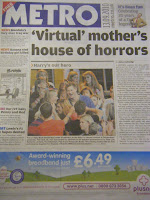The Challenge

Front Cover:
The Challenge is a free local newspaper, distributed in a colleges, schools, offices and many community building around the local area of Knowsley. This means the stories inside will interest the residents in Knowsley, college students and parents of students.
The Challenge masthead has a red block box around it positioned at the top of the newspaper (this is code and convention of all newspapers.) The text of the masthead is white and bold, this is not the biggest text on the front cover, as the main headline is bigger font size.
The Challenge front cover contains a lot of text compared to the other newspaper I have analyzed. To me the more text on the front cover suggest that the newspaper should be targeting a more older age group.
The main headline in block white text on a black background this stands out, immediately eye catching “COUNCIL FACE SHORT OF £30M” This text is also underlined which makes the headline become more important,
There are two images on the front page, one of teh image is lead for the main headline the other image is used as an insight of what is inside the newspaper.
The challenge contains two display ad's on the front cover these both are very relevant readers of the local newspaper. The first advert is for a local taxi company including the phone number and bold. The second advert is for a ‘Youth Theatre” this is targeting younger reader and the parents to take them to community events and clubs.
The Challenge has contents on the right hand side of the newspaper, showing the reader what’s inside and on what page. This contents in most newspapers are positioned on the inside page not front cover.
The Challenge front cover has used the colour read.
The colours red and blue are used in the other local newspaper disturbed in this area of Knowsley/Liveprool this is now becoming a code and convention within this area
Inside Page:
The inside page of this newspaper is different to most other newspapers as there isn't a contents section as this is positioned on the front cover.
The Challenge inside page contains a lot of different stories and information, which is not seen as much in most newspaper first page. I think that there is too much filling the page making it look overcrowded and t much for the reader to read on the inside page.
There is a range of different font sizes highlighting the main stories to the information that is not as important or as interesting.
The main headline on the inside page of The Challenge is 'Aid for Pakistan reaches more than £1000' This may be relevant to people of an older generation in Knowsley but not for people of a younger generation so this doesn't relate to their target audience of college students as that’s were this newspaper is distrusted.
The Challenge inside page has not got relevant information/stories for all there target audience there is nothing for the student of college. As they will not be interested in, Public Notice or the Crime updates.
There is a display ad for Clarendon College this relevant parent who have young children attending.
I don't believe that the inside page is relevant to the target audience of college students. The information and stories inside are relevant to people in Knowsley but not appealing to college students or younger generation.




















